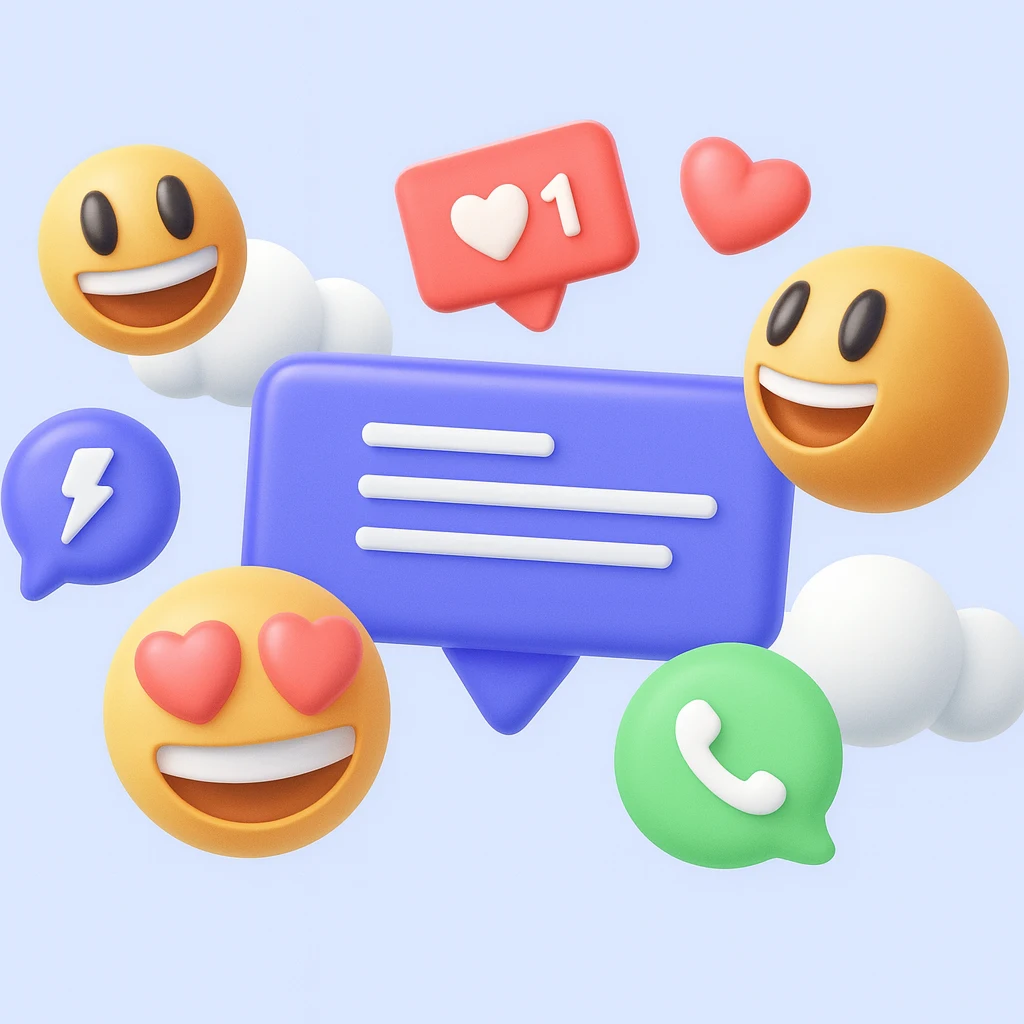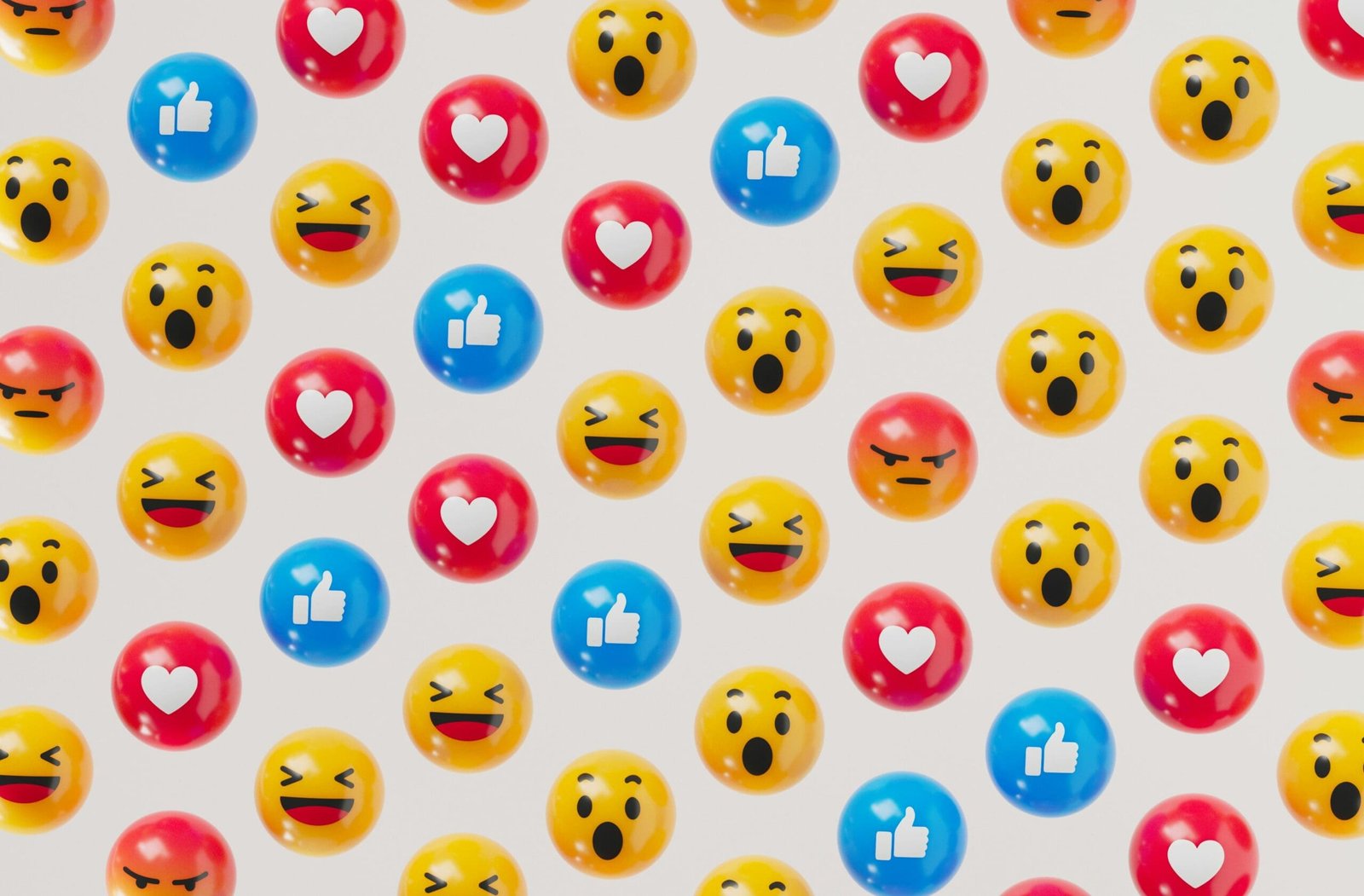Emoji History: Origins, Fun Facts & Most Popular Icons

Emojis are more than just cute faces on your screen; they’re a digital language reshaping how we communicate online. From memes to internet slang, they’ve become a cornerstone of digital culture. But where did they come from? Who created them? And how did they evolve into a global phenomenon? Let’s take a quick scroll through emoji history and uncover a few things you probably didn’t know.
1. The First Emojis Are Now in a Museum! 🖼️
In 1999, Shigetaka Kurita designed the first-ever emoji set, 176 tiny 12×12-pixel icons created for Japan’s early mobile internet service. They were meant to save space in texts and express emotion without words.
Fact: These humble icons are now considered digital art and are part of the permanent collection at the Museum of Modern Art (MoMA) in New York City. MoMA preserved them because they represent a milestone in digital culture, showing how technology and design can shape global communication.
Source: View the emoji set at MoMA
2. Emojis Took Over Japanese Phones Fast
After Kurita’s original set launched in 1999, NTT Docomo integrated emojis into its i-mode platform, and Japan’s mobile users instantly loved them. Emojis became a space-saving way to express feelings and reactions, a perfect fit for Japan’s growing mobile culture, where brevity and visual clarity were key.
Fact: Docomo’s emojis included weather icons, tech symbols, and emotions, many of which inspired today’s emoji standards.
Example: Popular icons included the classic smiling face 😊, the heart ❤️, and simple weather symbols like ☀️ and ☔, which quickly became staples in everyday messages.
Source: Emojipedia – Docomo Emoji Set
3. Emojis Go Global with Unicode (2010)
The biggest shift happened in 2010, when the Unicode Consortium officially included emojis in Unicode Standard 6.0. This made it possible for emojis to be used consistently across all devices, from Apple to Android and beyond, so messages wouldn’t show garbled symbols when sent between different platforms.
Fact: Emoji support in Unicode 6.0 included over 700 characters, transforming them from a Japanese mobile trend into a global keyboard language.
Source: Unicode 6.0 Release Notes
4. “Face with Tears of Joy 😂” Becomes Word of the Year
In 2015, Oxford Dictionaries made history by naming an emoji, not a word, as its Word of the Year. The winner? The now-iconic “Face with Tears of Joy” 😂. Chosen for perfectly capturing the year’s mood and online culture. Oxford highlighted its massive usage on social media. Especially Twitter, where it became a symbol of humor, relatability, and the way people expressed emotion digitally.
Fact: It was the first time a pictograph earned the title of Word of the Year, beating out actual words like lumbersexual and on fleek.
Source: Oxford Languages – Word of the Year 2015
5. Emojis Become More Inclusive (Emoji History 2015–Present)
In 2015, Unicode introduced emoji skin tone options, letting users personalize hand gestures and people emojis to better reflect themselves. These tones are based on real dermatology standards called the Fitzpatrick scale, which classifies human skin types.
Fact: he emoji version is even officially recognized under LOINC Code 89843-7, making it a standardized way to represent diverse skin tones in digital communication.
Source: LOINC – Emoji Modifier Fitzpatrick Scale
6. Now There Are Thousands, Over 3,700!
As of Unicode 15.1 (June 2023), there are 3,782 officially approved emojis, ranging from classic smileys and food to zodiac signs, flags, professions, and beyond.

Fact: The first emoji pack started with just 176 icons; today’s emoji landscape is over 20× bigger, and new ones are added regularly.
Source: Unicode Full Emoji List
7. What’s the Most Used Emoji?
According to the Unicode Consortium’s emoji frequency data, the “Face with Tears of Joy” (😂) has held the top spot for usage globally year after year. It consistently makes up around 5–6% of all emoji use, far more than any other single emoji.
Fact: Despite younger generations shifting humor toward 😂’s “rivals” like 💀 (“I’m dead”) or 😭, the data still confirms 😂 remains the most-used emoji worldwide.
Source: Unicode Emoji Frequency (Home Page)
8. How Many Emojis Are There in 2025?
According to Emojipedia’s latest statistics, there are now 3,836 official emojis, spanning everything from smileys and animals to food, flags, and diverse professions.

Cool Chart Insight: That’s a 21.8× increase from the original 176 emojis in 1999, with hundreds of new icons added each year 📈
Source: Emojipedia Stats – Emoji Totals
9. What’s Next for Emojis?
Emojis are evolving quickly, from static icons to a richer emotional interface. Over the past decade, they’ve shifted from simple expressions to cultural symbols, and now they’re moving into interactive and personalized realms.
Emerging Trends highlighted by experts at Cambridge University Press:
- Animated emojis and stickers in messaging and social apps
- Tailored emojis generated by AI, reflecting your tone, mood, or even regional culture
- Accessibility improvements, with more options for different communication needs
Source: Cambridge University Press – The Past, Present and Future of Emojis
These changes are part of a much broader shift in how we express identity and culture online. For more insight into where digital trends are headed, take a look at the latest pop culture predictions for 2025, from fashion to fandoms to the way we talk online.
Why Emoji History Still Matters
From a 12-pixel smiley on a Japanese pager to a global language with nearly 4,000 icons, emojis have come a long way. They’ve become more than just cute additions to messages; they’re emotional cues, cultural snapshots, and digital shorthand for how we feel, react, and relate.
But emojis are only one part of the fast-changing world of online expression. As communication keeps evolving, we’re also seeing the rise of new digital dialects, ones shaped by memes, reaction slang, and Gen Z’s signature humor. If you’re curious how today’s internet language is redefining how we speak online, don’t miss this deep dive into new internet slang trends in 2025, the perfect next scroll.
FAQs About the Emoji History
1: Why do some emojis look different on iPhone vs. Android?
While Unicode standardizes what each emoji represents, platforms design their own visuals, so the same emoji can look slightly different across devices.
2: How did emojis influence social media trends?
Emojis became shorthand for reactions, moods, and memes, shaping how people communicate on platforms like Twitter, Instagram, and TikTok.
3: Are there emojis for accessibility?
Yes! There are emojis representing people with disabilities, assistive devices, and inclusive options to make digital communication more representative.
4: Can using emojis affect how your messages are perceived?
Definitely. Emojis can soften a message, convey humor, or express emotion that words alone might miss—sometimes changing the tone entirely.
5: What’s the fastest-growing emoji category today?
Food, activity, and inclusive representation emojis are among the fastest-growing categories, reflecting lifestyle trends and cultural awareness.


